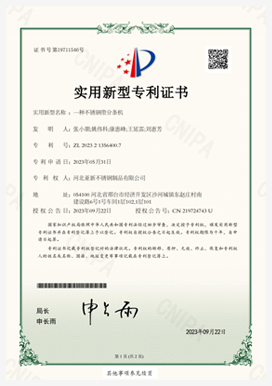maize harvester
The Evolution and Importance of Maize Harvesters
Maize, or corn, is one of the most important crops globally, serving as a staple food and a significant source of livestock feed. The process of harvesting maize is crucial, as it directly impacts yield, quality, and the efficiency of agricultural practices. Over the years, maize harvesters have evolved from simple hand tools to sophisticated machinery, streamlining the harvesting process and enhancing productivity.
In the past, maize harvesting was a labor-intensive task, requiring large numbers of farm workers to manually cut, dehusk, and gather the ears of corn. This method was not only time-consuming but also prone to inaccuracies, resulting in potential losses due to spoilage or damage. Farmers faced the challenge of balancing labor costs with the increasing demand for maize. The need for a more efficient solution led to the development of mechanical harvesters.
The introduction of the first maize harvesters in the early 20th century marked a turning point in agricultural practices. These early machines combined various functions, such as cutting, gathering, and husking, into a single operation. As technology progressed, so too did the design and functionality of these harvesters. Modern maize harvesters are equipped with advanced features, including GPS technology, automated steering, and real-time data collection, which allow farmers to optimize their operations and make informed decisions.
One of the key benefits of using a maize harvester is the significant reduction in harvesting time. An entire field can be harvested in a fraction of the time it would take by hand. This efficiency not only saves on labor costs but also reduces the risk of crop damage during the harvesting process. Additionally, precise harvesting ensures that more maize is collected, minimizing waste and maximizing profitability.
maize harvester

Furthermore, modern maize harvesters are designed with sustainability in mind. Many of these machines are equipped to handle crop residue more effectively, allowing for better soil health and reducing the need for chemical fertilizers. By incorporating technology such as variable rate technology (VRT), farmers can apply inputs more efficiently, optimizing their resources and minimizing environmental impact.
In regions where maize is a key component of the economy, the advent of maize harvesters has transformed farming practices. For smallholder farmers, access to these machines can lead to increased yields and improved livelihoods. As a result, communities can benefit from a more reliable food supply, and farmers can participate more effectively in local and global markets.
However, the transition to mechanized harvesting is not without challenges. Initial investment costs for purchasing or leasing a maize harvester can be high, particularly for smaller farms. Additionally, ongoing maintenance and the need for skilled operators can pose obstacles. Therefore, governments and agricultural organizations often play a crucial role in providing support, training, and financial assistance to ensure that farmers can benefit from these advancements.
In conclusion, maize harvesters have revolutionized the way maize is cultivated and harvested. With advancements in technology, they have become indispensable tools for farmers, enhancing efficiency, sustainability, and profitability. As we continue to face global challenges in food production, investing in modern harvesting technologies will be crucial for ensuring food security and supporting the agricultural sector's growth.
Latest news
-
When to Upgrade Your Old Forage HarvesterNewsJun.05,2025
-
One Forage Harvester for All Your NeedsNewsJun.05,2025
-
Mastering the Grass Reaper MachineNewsJun.05,2025
-
How Small Farms Make Full Use of Wheat ReaperNewsJun.05,2025
-
Harvesting Wheat the Easy Way: Use a Mini Tractor ReaperNewsJun.05,2025
-
Growing Demand for the Mini Tractor Reaper in AsiaNewsJun.05,2025
